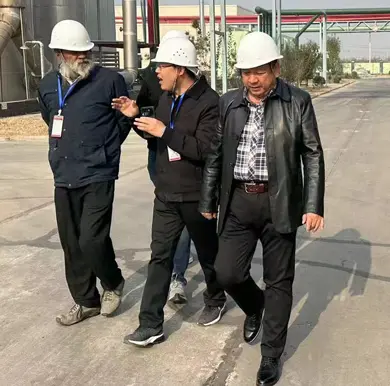
nov . 01, 2024 10:10 Back to list
Understanding the Factors Influencing HPMC Glass Transition Temperature in Polymer Applications
Understanding HPMC Glass Transition Temperature
Hydroxypropyl methylcellulose (HPMC) is a widely used polymer in various industries, particularly in pharmaceuticals, food, and construction. It is a versatile, non-ionic cellulose ether known for its ability to form thin films, retain moisture, and improve the texture of products. One of the significant thermal properties of HPMC is its glass transition temperature (Tg), which plays a crucial role in determining its functional characteristics and applications.
Understanding HPMC Glass Transition Temperature
The glass transition temperature of HPMC can vary depending on its molecular weight and degree of substitution. Generally, as the molecular weight increases, the Tg tends to rise. This is due to the higher degree of entanglement in the polymer chains, which requires more energy to achieve the transition to the rubbery state. Additionally, variations in the degree of substitution, which refers to the extent to which hydroxyl groups on the cellulose backbone are replaced by hydroxypropyl and methoxy groups, can also influence Tg. Higher degrees of substitution can lead to a decrease in the Tg because they disrupt the hydrogen bonding network among the polymer chains, allowing for easier molecular mobility.
hpmc glass transition temperature

The relevance of Tg in manufacturing processes cannot be understated. In the pharmaceutical industry, for instance, the glass transition temperature helps in formulating stable drug products. When preparing solid dosage forms, such as tablets or granules, understanding the Tg assists in selecting appropriate excipients that achieve the desired release profile. A polymer's Tg must align with the processing conditions; if the temperature exceeds Tg during production, the material may become too pliable to form effective structures.
Moreover, the impact of moisture on HPMC cannot be overlooked. Water acts as a plasticizer, significantly lowering the Tg of HPMC. This effect can be advantageous in certain applications, as it can enhance the material's flexibility and workability. However, excessive moisture may compromise the stability and shelf life of the final product. Therefore, controlling environmental conditions, especially humidity, is crucial in ensuring the integrity of HPMC-based formulations.
In conclusion, the glass transition temperature of hydroxypropyl methylcellulose is a vital property that impacts its performance across various applications. By understanding the factors influencing Tg—such as molecular weight, degree of substitution, and moisture content—researchers and manufacturers can better tailor HPMC formulations to meet specific needs. This knowledge is particularly essential in the development of safe, effective, and stable pharmaceutical products, making HPMC an indispensable material in modern applications.
-
Unlocking the Benefits of HPMC Products: A Gateway to Versatile Applications
NewsAug.07,2025
-
Unleashing the Potential of HPMC Ashland: A Comprehensive Look
NewsAug.07,2025
-
Tile Bonding Cellulose: The Key to Superior Adhesion and Durability
NewsAug.07,2025
-
Hydroxypropyl Methylcellulose Powder: The Versatile Component in Modern Pharmaceuticals
NewsAug.07,2025
-
Hydroxyethyl Cellulose: The Versatile Solution for Various Industries
NewsAug.07,2025
-
Hydroxyethyl Cellulose (HEC): The Versatile Polymer for Various Applications
NewsAug.07,2025







